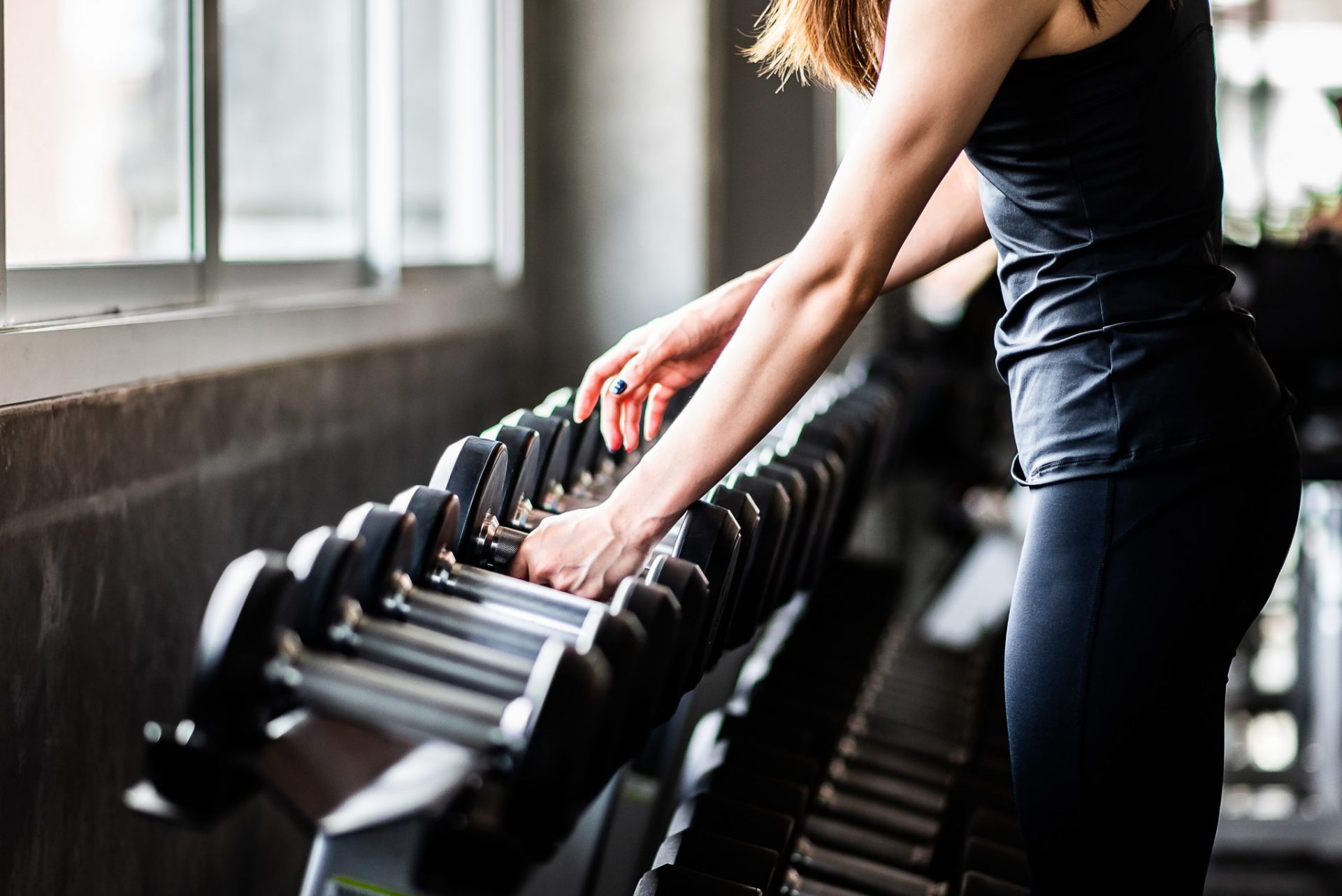Here’s how to perfect your form if you're not used to strength training
Struggling to get your form right on a new exercise? Modifications might be just the thing you need.
When trying to incorporate something new into your strength training routine, it’s not always a good idea to dive in headfirst. Particularly if you aren’t used to the movements or haven’t yet worked on strengthening the right muscles, picking up a weight and throwing yourself at it can lead to injury.
But never fear – using exercise modifications is a great way to work your way up to a full rep of a new exercise. Simply put, modifications are a way of alleviating some of the tension of a strength training exercise. This will lower the impact and allow you to focus on building up your muscles, so that you can work on properly and safely performing the full movement.
We asked personal trainer Veowna Charles for her insights into the benefits of exercise modifications, and we share some handy tips for modifying staple strength training exercises.
You may also like
Stretching: support muscle recovery and avoid injury with these postures
What are the benefits of modified strength training exercises?
Veowna explains that modified strength training exercises improve the range of motion and mobility in the part of the body that you’re working, which will help you to get your form right without causing any damage. They can also help to “prepare the muscles for increased loads and impact”, and this is particularly necessary if you’re new to an exercise.
Overall, these benefits help to “increase muscular endurance and strength”, which in turn “improves speed, power”, and reduces your risk of causing any damage.

Exercise modifications for working your way up to the full rep
Swiss ball squat
A squat is a staple lower body exercise, and a great one to work up to if you’re putting together a leg day regime. By placing a Swiss ball between your back and a wall while you squat, Veowna explains that you can reduce the pressure placed on your lower body, “while still strengthening your quadriceps, hamstrings and hip flexors”. This way, you can work your way up to doing a full, deep squat, without overworking your muscles.
Start standing up straight with your feet hip width apart and your back resting against the Swiss ball behind you, and then slowly bend your knees and lower your body downwards. In a full squat, the goal would be for your knees to end up in a 90 degree angle, but it’s important you listen to your body and stop if there’s too much tension or any discomfort. Once you have lowered yourself down as far as you can go, slowly return to standing and repeat.
You may also like
Mobility workout: move better and prevent injury with mobility exercises
Static lunge with TRX
TRX, which stands for “total resistance exercises”, is a form of suspension training that uses specialist resistance bands. This exercise, therefore, will require access to TRX equipment, which may be available at your gym. Veowna recommends a static lunge using TRX because holding it while you work through the movement “will allow you to reduce load on this unilateral exercise, so you can work on the balance of the muscular structure”.
To complete a static lunge using TRX, simply stand up straight with your feet about hip width apart and your hands holding the TRX out in front of you. Then, step your left leg back, bend your knees, and lower your body down. Ideally, you’ll want to end up with both knees at a 90 degree angle, but don’t forget to listen to your body and stop if you experience too much tension or discomfort. Then, drive through your feet to stand up straight again, repeat ten times, and do the same using the right leg.

V-sits
V-sits are core exercises that you do on the floor, which strengthen the muscles around your hips, abs and spine. These are great to do if you want to work your way up to doing a full sit-up, or to get to the point where you feel comfortable exercising your core using weights.
Begin by lying flat on the ground with your arms straight out over your head, so that your body forms a straight line. Then, squeezing your core and keeping your limbs straight, lift your arms and legs up off the ground. Pause once your body forms a V shape, and then slowly return back to your starting position. Then, as you make progress, you can “increase the difficulty by holding dumbbells or weight plates”, according to Veowna.
Knee press-ups
Press-ups are a great full-body exercise, but they can be difficult, especially if you’re just starting out. An easy modification for building up the muscles in your arms and core while you work towards a full rep requires you to hold your body up using your knees, rather than your toes, thus alleviating some of the tension.
You may also like
How to make press-ups feel easier, as tested by the Strong Women team
Start on the floor on your hands and knees, and then slowly bend your elbows to lower your upper body towards the ground. Hold for a second, and then drive through your hands to push yourself back up to your starting position, and repeat.
Lat pull-overs
A pull up is notoriously difficult, requiring you to use your upper body to hold your weight and pull yourself up off the ground. To train the muscles needed for this exercise, you can try lat pull-overs, which strengthen the broad muscles of your back.
Easy to do with a light weight, simply lie flat on your back with arms straight up in the air, holding the weight with both hands. Then, slowly lower your arms down behind your head, so that the weight is just above the ground. Raise the weight so that you are once again holding it high above your chest, and repeat.
Follow @StrongWomenUK on Instagram for the latest workouts, delicious recipes and motivation from your favourite fitness experts.
Images: Getty
Source: Read Full Article
